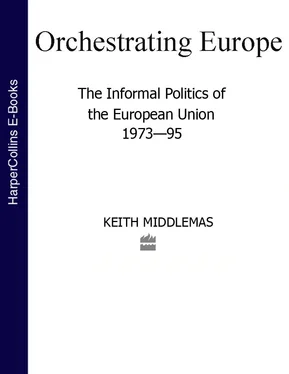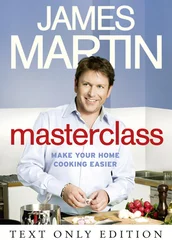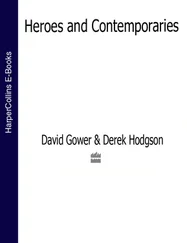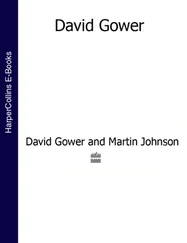The Commission also suceeded in making the EEC the focus of international relations with the wide range of African territories that had made up the previous French and, to a lesser extent, Belgian and Dutch empires. These countries were overwhelmingly dependent on Community markets for both exports and imports, and on the metropolitan countries for much of their capital. Their future had been introduced at a late stage into the Treaty of Rome negotiations as a way of reducing the burden of their upkeep on the French budget in return for France’s renunciation of its bilateral preferences (or, more to the point, the multilateralization of those preferences). Thus the Six would remove tariffs and quotas on imports from these areas in the same way as those on intra-trade. By March 1963, tariffs had been reduced by 50% for manufactured products, by 30% for most of the liberalized agricultural products and 35% for the remaining agricultural products. It was not foreseen that these reductions would be strictly reciprocal, but protection retained by the overseas territories had to be applied equally to the Six. 15
After a five-year period, the association agreements were put on a new basis with Yaoundé I, negotiations for which lasted from mid–1961 to July 1963. These negotiations were difficult insofar as many territories had ambivalent feelings towards their colonial and excolonial masters and towards the prospect of neo-colonialism on a European scale. Moreover, the European member states were far from identical in their views of these countries. Whilst France shared with the Commission a desire to renew and extend the association, the Dutch were rather critical. Large Dutch economic interests in Commonwealth Africa led them to demand an agreement that could accommodate these territories and they linked the outcome of Yaounde I to the question of British accession. Only when the French veto blocked this possibility could real progress be resumed. The principles of the agreement were:
* Free trade area, dismantling of tariffs and quotas
* Technical and financial aid payments and capital liberalization
* Freedom in rights of business establishment and services
In 1969, after only six months’ negotiations, Yaoundé II was concluded to govern the relationship for another five years. These talks were much easier since many of the earlier problems had passed, though not without traumas: in essence, France and Belgium had accepted their post-colonial status. The issue of widening the association had been resolved by the Arusha Convention of July 1968 which put relations with Kenya, Tanzania and Uganda on a new footing. Finally, and most tellingly, the agreements had had positive effects on the development of the African territories concerned.
The preferences established by the association clauses and by Yaoundé I and II have prompted much criticism. Non-associated countries in Africa, Asia and Latin America were opposed to the arrangements. So too were the United States and the United Kingdom. From the very beginning, the arrangements were condemned as incompatible with GATT and this discussion remained alive throughout the period. George Ball, then US secretary of state, suggested that it ‘tends to result in a poor use of world resources’. What he said was true, but efficiency in the global allocation of resources had not been the Commission’s main objective. Its first General Report defended its association policy in unambiguous terms:
It was the duty to promote the economic and social development of the Overseas countries and territories associated with them by letting these countries and territories share in the prosperity, the rise in the standard of living and the increase in production to be expected in the Community.
The trade-off between access to industrial and agricultural markets had been a central cornerstone in negotiating the EEC. Yet there was so little chance of agreeing on the form of the policy or the level of protection during the negotiations that, unlike the sections on the customs union, the clauses on the Common Agricultural Policy remained largely procedural. Ehrard, who was anyway opposed to much of the Treaty of Rome, argued that the vagueness of the clauses proved that they were designed to be forgotten. The key to ensuring that this did not happen lay not in the paragraphs concerning agriculture but in article 8 which made progress through the three stages towards the customs union contingent upon equivalent progress in agriculture.
As commissioner in charge of agriculture, Sicco Mansholt started his work by rallying national agricultural pressure groups behind a European policy. In June 1960 he submitted his first proposal to the Council of Ministers. This foresaw free trade in agricultural products within the Community but with uniform target prices and variable levies on imports. In addition there would be structural policies designed to raise productivity. In 1962, after intense negotiations, market unity, Community preference and financial solidarity emerged as the principles of a future CAP. However, this still left important issues such as the level of support prices and the financing of the system to be settled before the CAP could become operative. Meanwhile a regulation was passed establishing the FEOGA (Fonds Européen d’orientation et de garantie agricole) whose provisions extended until mid–1965. 16
The level of common prices as well as the financing of the CAP proved to be very controversial and the fierce negotiations almost brought the EEC to the brink of collapse. It took until the end of 1964 before German reluctance to accept a target price for grain below their prevailing national level could be overcome and before a common price level for cereals could be introduced. Proposals for common financing of the CAP were submitted in March 1965. Since these envisaged augmenting the EEC’s institutional powers, through increasing the budgetary competences of the European Parliament and the introduction of majority voting, France flatly opposed the move. In summer 1965, it withdrew its representation from all EEC meetings and, with this ‘Empty Chair’ policy, precipitated a major crisis within the Community which was only resolved in January 1966 with the Luxembourg Compromise – usually described as an ‘agreement to disagree’.
The Luxembourg Compromise stipulated that the Commission would consult with governments before adopting any important proposal, notwithstanding its rights of initiative enshrined in the Treaty of Rome. More significantly, it stipulated that if a country felt its vital interests to be at stake, even on issues normally decided by majority, the Commission was bound to continue discussion until unanimous agreement was reached – or drop the proposal altogether. Although at the same time the financing of the CAP was resolved, with a fixed scale of contributions agreed to run until January 1970, these events emphasized that the balance of power lay not with the Commission, but with member states.
Relatively high price levels within the CAP soon led to serious problems. Besides raising the cost of living, high guaranteed prices contributed to a rapid growth of agricultural surpluses. By the beginning of the 1970s, the EEC had turned a deficit in wheat and barley into a surplus of 10% above requirements. An equilibrium in butter had been transformed into a surplus of 16%, and a 4% surplus in sugar beet had been bloated to closer to 20%. Mansholt responded in 1967 by calling for more emphasis on structural policies that would allow a reduction in prices, but this appeal foundered on violent oppostion from agricultural organizations. The Council of Ministers capitulated to pressure by rejecting any consideration of price cuts and by diluting considerably the proposals for structural policies. 17
One of the principles of the CAP was that the same price and marketing conditions prevailed throughout the Community. Thus, when the CAP began, unified support prices were expressed in units of account (u/a), a measure of value equivalent to the US dollar. However, changes in exchange rates between currencies would also require an alteration in producer prices expressed in the national currencies concerned. Thus, when the French franc was devalued in 1969, domestic producer prices should have been raised by an equivalent percentage. Similarly, domestic returns for German producers should have been reduced to make allowance for the revaluation of the deutschmark. However, governments were reluctant to adjust farm prices in the direction of, and to the degree indicated by, fluctuations in exchange rates. As a temporary solution they therefore established a system of Monetary Compensation Amounts – i.e., subsidies and levies for imports and exports – to bridge the gaps that had emerged between domestic and ‘common’ European prices. Later this ad hoc provision was virtually institutionalized by the introduction of special exchange rates, the so-called ‘green’ rates, that applied exclusively to agriculture and allowed the agricultural support prices expressed in national currencies to diverge. 18This procedure increased the costs of the CAP, perpetuated and aggravated distortions in competitive conditions in national markets, returned effective control of agricultural prices to national governments and undermined the entire logic of having a ‘common’ policy. Indeed, divergences in national prices sometimes exceeded those experienced before efforts at price harmonization began in 1967.
Читать дальше









![Brian Thompson - A Monkey Among Crocodiles - The Life, Loves and Lawsuits of Mrs Georgina Weldon – a disastrous Victorian [Text only]](/books/704922/brian-thompson-a-monkey-among-crocodiles-the-life-thumb.webp)


